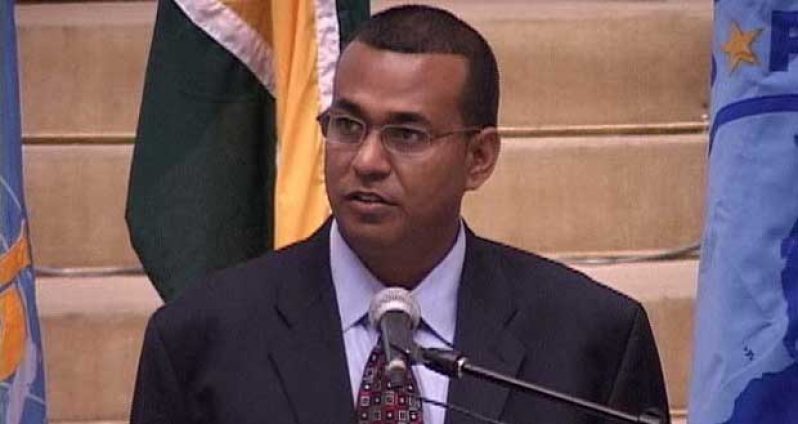THE Land Reclamation Committee (LRC) of the Ministry of National Resources and the Environment (MNR&E) is seeking to buttress the gold mining industry in its efforts at adopting clean and sustainable mining, without in any way curtailing or diminishing its important contributions to the economy.Minister Robert Persaud reiterated this position during a feature address to a miners’ forum held at the Guyana Forestry Commission (GFC) Training Centre yesterday.
He said: “There were some who were urging the Government to curtail mining in favour of safeguarding the environment. But that is not our position. We have no interest in slowing down mining. What we want are miners who are just as enthusiastic about their social responsibilities towards the environment as they are about exploiting its resources.”
He stressed that such a “culture” was absolutely necessary for the prosperity and sustainability of the industry as well as its patrimony to future generations.
The Miners Forum had been organised by the MNR&E for stakeholders in the gold and diamond mining industry to brief them on the functions and composition of the recently formed LRC and to seek their inputs into its method of operations and their support for its operations.
Minister Persaud disclosed that the LRC was born out of discussions and decisions made by the Special Land Use Committee (SLUC) which had been set up in 2009 with the aim of finding ways of reducing conflicts caused by multiple land use in the hinterland.
He said that land reclamation referred to the restoration of landscapes disturbed by mining operations to environmentally sound and productive conditions for present and future generations.
POST-MINING ACTIVITIES
It involves re-vegetation of the restored landscape with the proper grass and tree species or utilising the landscape with post-mining activities such as croplands, fish ponds or pasture lands for animals.
He disclosed that the deliverables of the LRC are also intended to support the MNR&E’s strategic priority goal of “Sustainable Resource Use and Monitoring” with expectations of restoring key natural resources to their natural state.
During the forum yesterday Mr. Godfrey Scott of the Ministry briefed the stakeholders on the importance of land reclamation and the fact that it could be done with minimal additional cost to their operations.
He used case studies of past reclamation exercises, including one at Mahdia in Region 8 (Potaro/Siparuni) to show how this was possible.
Mr. Haimwant Persaud, Manager of the Geospatial Information Management Unit (GIMU) of the MNR&E briefed stakeholders on the role of geographic information collected by satellites as it related to deforestation around mining claims in Guyana.
He said that the Geographic Information System (GIS) had been able to detect the various sizes of deforestation which he described as “hot spots.”
The system will help the LRC to keep track of the land reclamation efforts of miners.
Mr. K. C. Singh of the bauxite company RUSAL told miners that it makes sense and money as well to restore as they mine.
He urged miners to maintain nurseries of plants even while mining so that these plants can be readily available for reforestation after restoring disturbed landscapes.
Minister Persaud had in March of this year disclosed that the GGMC will be funding a land reclamation project valued at $500M to aggressively reclaim mined-out lands and engage in reforestation activities to preserve the forest for future generations.
(By Clifford Stanley)



.jpg)








